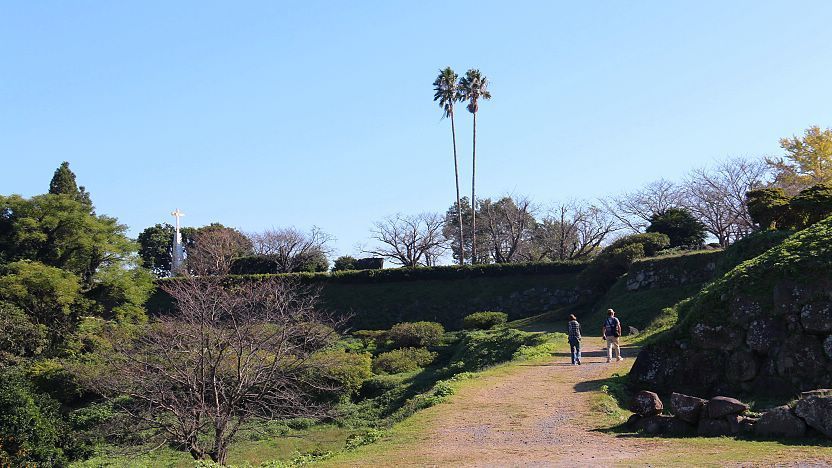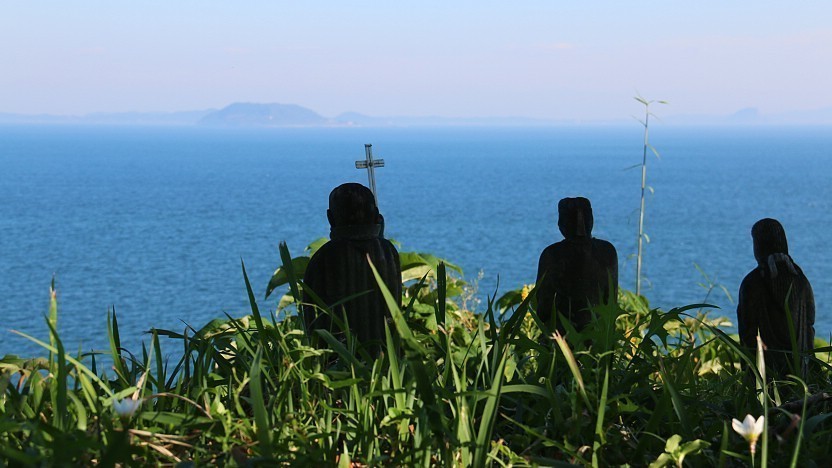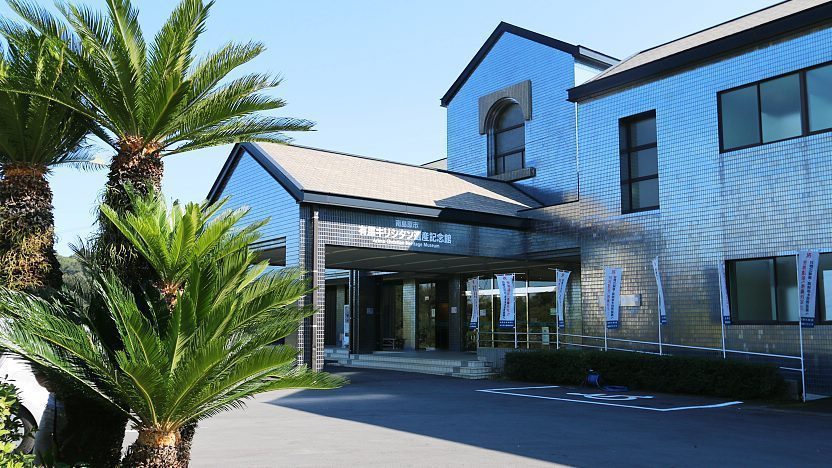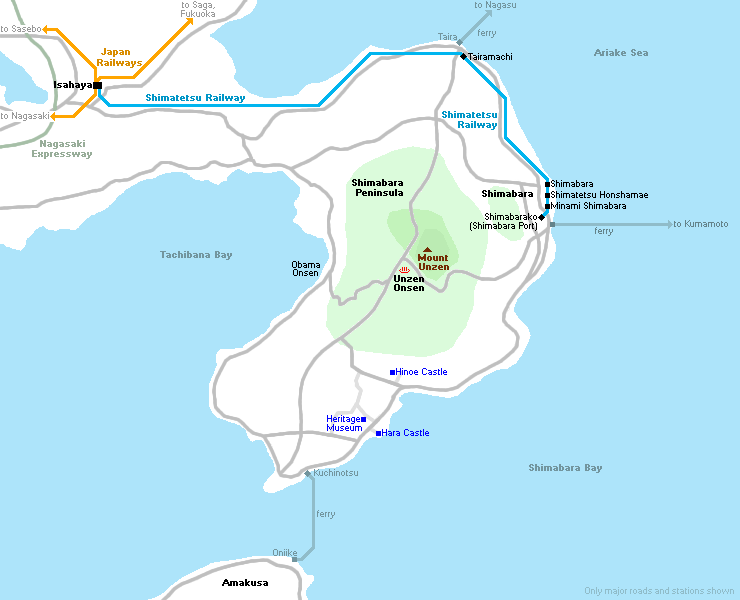Hara Castle Ruins

Hara Castle (原城, Harajō) was built in 1604 on a hill overlooking the Ariake Sea. In 1637, it became the final battle ground of the Shimabara Rebellion, a large uprising of peasants - many of whom were Christians - who were upset about excessive taxation and religious persecution by the local lord. Large shogunate forces were sent in to put down the uprising, but the defenders held out for more than a year. The castle was eventually overrun, its fortifications razed and the rebels killed.
All that is left of Hara Castle today are some ruined fortifications, including the outlines of the former baileys, stone walls and the foundation stones of the castle gates. The honmaru (main bailey) is now a small park with a stone monument memorializing the rebellion. There is also a bronze statue of Amakusa Shiro, the charismatic young rebel leader, who was executed after the fall of the castle.

About two kilometers west of the castle stands the Arima Christian Heritage Museum (有馬キリシタン遺産記念館, Arima Kirishitan Isan Kinenkan), named after the Arima clan that used to rule the Shimabara Peninsula. The museum teaches visitors about the history of Christianity in Japan with an emphasis on the local Shimabara Peninsula. Half of the museum covers the arrival of Western traders and how their impact on the economy, politics and society.
The other half of the museum focuses on the period after Christianity was banned in Japan. This includes displays of how Christians were persecuted, a replica of an excavation site at Hara Castle where human bones were discovered, and displays of Christian artifacts that were excavated from the castle grounds including, crosses, medals and rosary beads. Unfortunately, information in English is rather limited.

Not far from Hara Castle are the remains of Hinoe Castle (日野江城, Hinoe-jō), the main castle of the local lords and center of the domain for almost 300 years. Hinoe Castle was also assaulted during the Shimabara Rebellion, but the rebels were unable to defeat the well-fortified fortress and moved on to occupy Hara Castle instead.
Hinoe Castle was eventually abandoned in favor of Shimabara Castle further north, and all that is left today are the ruined fortifications and overgrown terraces that used to form the castle's baileys. Ongoing excavation work has uncovered foundations and a stone staircase that was once part of the main approach to the keep. The Christian lord who constructed the castle used stones from Buddhist gravesites to build the staircase.

Getting there and around
The castle ruins are located in the Minami-Shimabara area, about 25 kilometers south of central Shimabara City. They can be accessed by hourly buses in around an hour from Shimabara Station (about 1000 yen one way). Get off at Harajo-mae (原城前) from where the Hara Castle Ruins can be reached in a 15 minute walk, while the Arima Christian Heritage Museum is about a 20 minute walk in the opposite direction from the bus stop. To access the Hinoe Castle Ruins, get off at Hinoejo-iriguchi (日野江城入口) from where it is a 15 minute walk to the ruins.
How to get to and around the Shimabara Peninsula

Hours and Fees
Hara Castle Ruins
Hours
Closed
Admission
Arima Christian Heritage Museum
Hours
Closed
Admission
Hinoe Castle Ruins
Hours
Closed
Admission
Questions? Ask in our forum.


